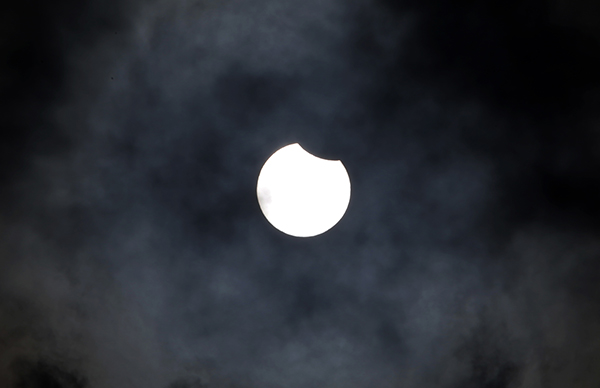NASA needs your help to study August's solar eclipse
GREENBELT, Maryland (KTRK) -- For the first time since 1979, a total solar eclipse will be visible from the contiguous United States this August -- and NASA needs your help to get in on the action!
Using the agency's GLOBE Observer mobile app, citizen scientists around the country can help NASA collect important data that will help scientists better understand the relationship between the sun and our planet.
On August 21, 2017, the eclipse will sweep across the lower 48 states, although the totality -- a thin, 70-mile area where the moon will appear to fully cover the sun -- will only pass through 12 states.
PHOTOS: Eclipses around the world













According to NASA, the eclipse's first point of contact will occur in Salem, Oregon, at 9:05 a.m. local time. The totality will then continue through Idaho, Wyoming, Nebraska, Kansas, Missouri, Illinois, Kentucky, Tennessee, Georgia and North Carolina, before ending in Charleston, South Carolina, at 2:48 p.m. local time.
We are outside of that totality zone here in Houston, so we will only see a partial solar eclipse. The sun will be 67 percent covered by the moon -- that's still worth checking out! You will see the amount of sunshine decrease and feel the temperature drop a bit, and the clouds will look different.
You can help NASA collect data even if you are out of the eclipse's path of totality.
The celestial event will be visible for the longest period of time from Carbondale, Illinois.
Those watching from other states (as well as viewers in portions of South America, Africa and Europe) will still be treated to a partial eclipse, where the moon will appear to cover only a part of the sun.
NASA has created an interactive map that shows viewers across the country exactly when and where they can spot the eclipse.
During the 1979 eclipse, the totality passed through the Pacific Northwest before sweeping up through eastern Canada.
The next total solar eclipse that will be visible from the contiguous United States will occur on April 8, 2024.










